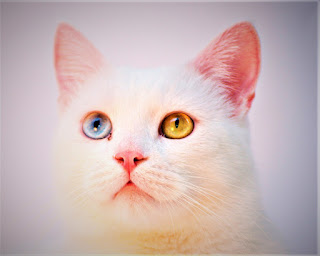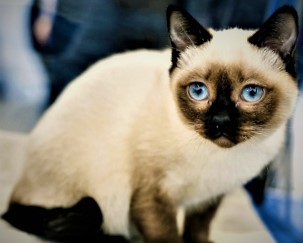The Enchanting Ceylon Cat: A Rare and Exotic Feline Treasure
Introduction to the Ceylon Cat
The Ceylon Cat, a rare and captivating feline breed, originates from the tropical island of Sri Lanka (formerly known as Ceylon). With its striking appearance, playful personality, and deep cultural significance, this breed is a hidden gem in the world of cats.
Whether you’re a cat enthusiast or simply curious about unique breeds, this article explores everything you need to know about the Ceylon Cat—from its history and physical traits to its temperament and care requirements.
History and Origin of the Ceylon Cat
The Ceylon Cat has a rich history intertwined with Sri Lankan culture. Unlike many modern breeds developed through selective breeding, the Ceylon Cat is a natural breed, meaning it evolved over centuries without human intervention.
- Ancient Roots: Believed to have existed for thousands of years, these cats were revered in Sri Lankan folklore and often depicted in ancient art.
- Name Origin: The breed gets its name from Sri Lanka’s colonial-era name, Ceylon.
- Recognition: While not widely known outside Sri Lanka, the Ceylon Cat was officially recognized by the World Cat Federation (WCF)in 1984.
Physical Characteristics: A Striking and Unique Appearance
The Ceylon Cat is a small to medium-sized feline with a sleek, muscular build and an exotic look. Key features include:
- Coat: Short, fine, and glossy with a ticked tabby pattern(similar to the Abyssinian).
- Colors: Typically, golden-brown, but variations include cinnamon, cream, and silver.
- Eyes: Large, almond-shaped, and expressive, ranging from green to amber.
- Ears: Medium-sized, slightly pointed, giving an alert appearance.
- Tail: Long and tapered, enhancing its graceful movements.
Personality and Temperament: Playful, Affectionate, and Intelligent
Ceylon Cats are known for their friendly and lively nature. They form strong bonds with their families and thrive on interaction.
- Playful & Energetic: Loves climbing, chasing toys, and exploring.
- Social & Affectionate: Enjoys human company and gets along with other pets.
- Intelligent & Curious: Quick learners who enjoy puzzle toys and interactive games.
- Vocal but Not Noisy: Communicates with soft chirps and purrs rather than loud meows.
Caring for a Ceylon Cat: Health, Diet, and Grooming
-
Health & Lifespan
- Generally healthy with a lifespan of 12-15 years.
- No known breed-specific diseases, but regular vet check-ups are recommended.
-
Diet & Nutrition
- High-quality protein-rich cat food (wet or dry).
- Fresh water and occasional treats (in moderation).
-
Grooming Needs
- Low-maintenance coat—weekly brushing suffices.
- Regular nail trimming, ear cleaning, and dental care.
-
Exercise & Enrichment
- Provide climbing trees, scratching posts, and interactive toys.
- Enjoys leash training and supervised outdoor exploration.
Is the Ceylon Cat Rare? Where to Find One
Yes, the Ceylon Cat is extremely rare outside Sri Lanka. However, some breeders in Europe (particularly Italy, where the breed was first introduced) may have them.
- Adoption: Check with specialty breeders registered with cat federations like WCF.
- Price: Due to rarity, prices can range from 800to800to2,000depending on lineage.
Why the Ceylon Cat is a Unique Companion
- Exotic Beauty: Its golden-ticked coat and expressive eyes make it stand out.
- Loving Personality: Perfect for families, singles, and seniors.
- Low-Shedding: Great for those with mild allergies.
Should You Get a Ceylon Cat?
If you’re looking for a rare, affectionate, and active feline companion, the Ceylon Cat is an excellent choice. While finding one may require patience, their enchanting personality and stunning looks make them worth the effort.
Would you consider adopting a Ceylon Cat? Let us know in the comments!
Ceylon Cat
History / Profile Ceylon Cat
The Ceylon cat breed comes from the island of Sri Lanka (formerly Ceylon), which is clear from the name. However, in the official registers, it is indicated that the breed originates from Italy. This conflict occurred because the Italian veterinarian Paolo Pelegatta visited the island in 1984, finding these interesting and unusual cats there.
He was struck by the mark on the muzzle, which looked like a pattern that adorned the hood of a cobra. After asking the locals, the veterinarian learned that these cats have long been revered as sacred animals, favorites of the Buddha, and it was he who left a mark on their faces.
In addition, these animals liked Paolo for their grace and beauty, as well as endurance, courage, ingenuity, and, of course, affectionate character. He decided to bring a few individuals with him, so to speak, to acquaint Europe with this amazing breed. After 4 years, Paolo Pelegatta,
With the help of professional breeders and felinologists, they created an ideal standard by selection.
In 1993, the breed standard was officially recognized by the WCF (World Cat Federation). Unfortunately, on the territory of the CIS countries, the Ceylon cat is little known, but its popularity is growing from year to year.
Characteristics of the Ceylon Cat breed
Adaptability 08/10
Attachment to the family 10/10
Gaming activity 09/10
intelligence 10/10
General health 10/10
Wool fallout 04/10
Friendliness to children 10/10
Friendly to dogs 10/10
Love of meows 05/10
Ceylon Cats Breed Information
| Country of origin | Sri Lanka Italy |
| Lifetime | 13-18 years |
| Size | average |
| Weight | Cats: 3-5 kg, Cats: 2.5-4 kg |
| Coat type | shorthair |
| Color | from sand to gold with a black pattern and distinct markings on the head |
| Lifestyle | indoors |
Price
|
1000 $
|
Description of the Ceylon Cat
Active, lively, affectionate, and very affectionate cats, Ceylon considers themselves as full-fledged members of the family, and not just a pet. They try to participate in all household chores, at least with their presence. They are sociable, talkative, and make it clear what they want at the moment, however, they are not capricious and obedient. They have good hunting instincts, and they can hunt mice.
These are small cats with short hair and elegant and muscular bodies. The legs are strong, slender, the tail is of medium length. The ears are slightly elongated, medium-sized, the muzzle is wedge-shaped, and the eyes are very expressive. The average life expectancy of these animals is 15-17
years.
Personality
One of the main features of Ceylon cats can be considered their endless supply of energy and vitality, so that they are never bored. Sometimes it seems that these animals can’t just lie idle – they are either sleeping or trying to find something to do. Moreover, they necessarily try to involve the owner or favorite people – family members – in their activity. And therefore, it is extremely good if there is a child in the family, as he will find in the pet the perfect companion for his children’s games.
In turn, the Ceylon cat also needs human attention and will be extremely happy with children’s society, games, and all kinds of entertainment. Her instincts and brain need constant stimulation, therefore, if you cannot provide the pet with such conditions, it is better to have other breeds. Since the Ceylon cat will not give you peace. They are very attached to “their” people, love to spend time with them, and need not only attention but also approval from the owner and family members.
In addition, these cats do not like to be alone, and for a long time to be torn away from their owner, this is also important to consider. In relationships, they always show great affection and love, are very balanced, and have no aggression. They perfectly understand people and their mood, listen to criticism, and, with due diligence on the part of the owner, they can even be taught simple commands.
Other pets get along normally, however, it should be understood that they have a hunting instinct, which means that the presence of birds or rodents in the house, for example, a guinea pig or a parrot, is not the best idea. Strangers are treated with friendliness.
Common diseases
The Ceylon cat breed is in excellent health and does not suffer from genetic diseases. If the owner provides the pet with good care, it is safe to say that he will not have to contact the veterinarian.
How to take care of a Ceylon Cat?
Like any other shorthair cat, Ceylon needs weekly combing. In addition, you need to bathe the pet every 2 months, trim the claws every 10 days, clean the ears once a week, and clean the eyes of deposits every 1-2 days. In addition, excess vitality requires periodic walking of the pet in the fresh air, you can on a leash. It will be especially good if you live in a private house and can provide the cat with free access to the street




